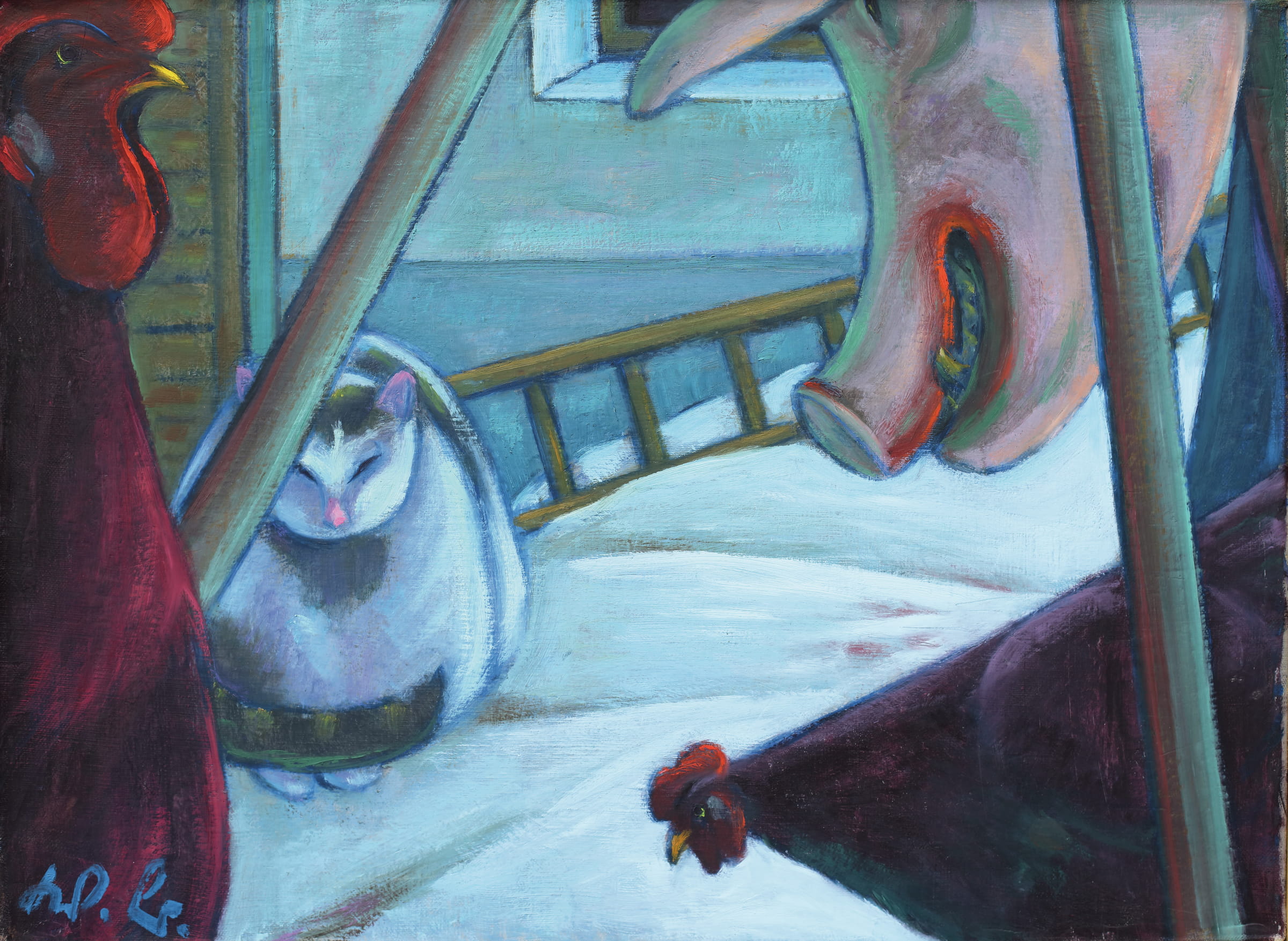Slaughtering II

Using small sections and taking a strictly formal approach, the painting depicts the rural thetrum mundi. The pig’s head is placed in the upper edge of the painting, while in its right corner the indifferent depiction of a hen is revealed. Crouching and making an attempt to close its eyes in the face of horror, the cat is reminiscent of bad conscience. Uprightly, high-handedly, and impervious to all misfortune, the rooster adorns the right edge of the painting. Its comb is colourd as a grand thaler: the garish red of the dripping slaughtered animal is applied here again and it represents the scarlet sign of unwavering power. It appears as if in memory of “Ecce homo” – this is how man is like - this painting wants to say „Ecce mundo – this is what the world is like“.
In terms of composition, the painting is a perfect example of Werner Berg’s creation of the painting’s space. The extreme leniency – not a single animal nor any of the depicted objects is cut – compels the observer to enter head-on into the action, and thus gives this small format the monumental magnitude. The lenience and leniency–related “circumsicion” of the painting’s edges in apparently arbitrary places create the magnitude of the depiction. On the one hand, this is in relationship of tension with a fairly small dimensions of figures; on the other hand, however, there is another relationship of tension between the magnitude and the triviality of themes. Further stylistic device takes the shape of an apparent arbitrariness of the section of the picture. Most paintings by Werner Berg reflect a section of reality - it appears as if the section were chosen by accident – which is part of the whole – part of the world.